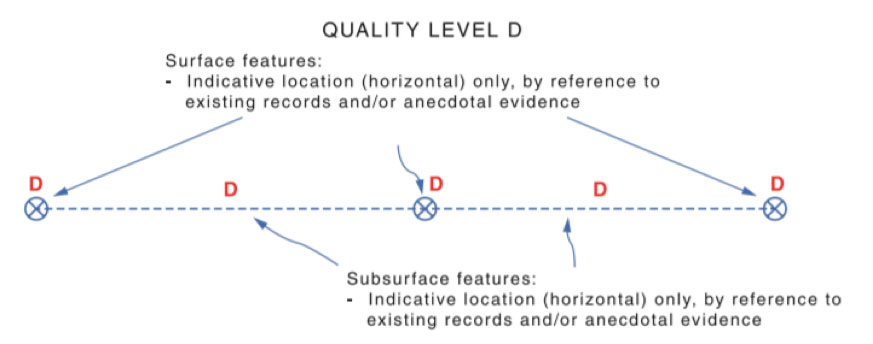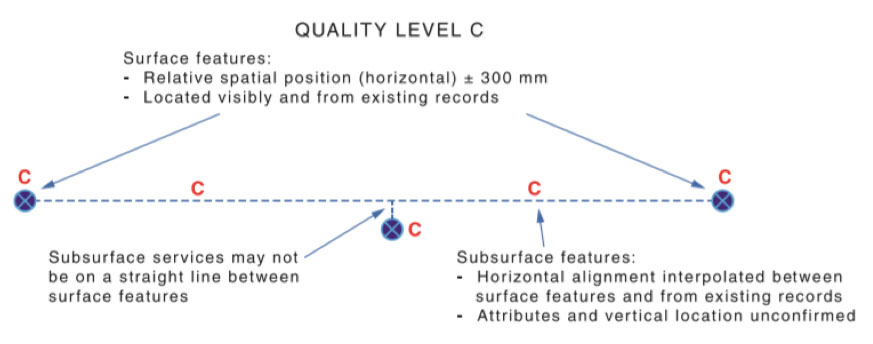-
OUR SERVICES
Location Services & Scanning
Call Us Now
-
ABOUT US
We accurately target the location and depth of services
K Locate specialise in Electromagnetic frequency (EMF) locating services. With the use of sophisticated underground cable location equipment, we help locate and map services such as: Gas, Water, Electric, Communication, Sanitary or Storm Sewer.
- Underground Service Location
We have the industry’s best available location EMF scanners on the market with multiple other pieces of equipment allowing us to accurately locate all cables regardless if live or not. We are also able to locate all pipes regardless of if they are metallic or not, we achieve this by utilising traced rodders and/or sondes. We photograph everything we do and include this in a report for our clients and this report can be altered to meet our clients requirements.
- Endoscopic/borescope cameras
We have various cameras for different environments with the smallest camera able to get through holes/gaps of 8mm moving upto our pipe inspection camera with 26mm camera that can go 60 metres underground whilst providing live footage to the operator. Once we find the issue we are able to accurately pin point the location and depth saving our clients time and $$$ in excavation and repair works.
- Leak detection
We are unique in the industry in our approach to leak detection, with a lot of experience in locating underground services we utilise some of this equipment to support our leak detection equipment. Using some of the latest specialised equipment we are able to not only locate the pipe but follow the line until we are upon the leak. We also offer a “one stop shop” approach and working side by side with preferred partners we can locate and repair the leak in the same visit no matter what the repair requires with excavators, concrete saws and many other specialised equipment available when required.
Challenges
We are always up for a challenge and don’t give up, the best to date is when we got phone call to help find a 3 legged cat that had bolted into storm water drains 24hrs previously with an extended lead attached, after 4 hrs we found the cat approx. 6 m below road level and with the help of the fire brigade we managed to reunite the cat with its owners that night!
Precision Locator
We have chosen the RD8100® cable locator and after lots of research we found it be engineered to deliver high precision for damage prevention when locating buried cables and pipes. This advanced range of underground utility locators offers optional integrated GPS and usage logging.
RD8100 is one of the most advanced high-precision cable locators available, and builds on over 40 years of pedigree to deliver performance, quality and durability. Containing a unique arrangement of 5 custom-manufactured, precision-ground antennas, it allows you to choose the best method to locate specific pipes and cables.
With utility infrastructures becoming more complex, locate professionals like K&J Scanning require more powerful, flexible tools. Features such as Current Direction and iLOC™ on the cable locator combine with the versatile Tx Transmitter range to deliver high-precision locates even in tough conditions.
Induction Clamps
We have difference sizes of induction clamps to improve the quality of signal we can put into the cables to give us a safe and straightforward way to apply the signal to pipe or cable to enable accurate tracing of this service.
Traced Rodders
Using non invasive detectable rods to locate and/or map underground conduit or pipe saves our clients $$$ in digging or trenching costs. Attaching a standard pipe and cable locator transmitter to the rod adaptor allows the EMF locator to locate the services easily. A copper wire inside the fibreglass inner core is energised with an electromagnetic signal that is detectable from above ground using our EMF signal receiver.
We have different sized traced rodders that allow us to trace all sizes of services underground.
Sonde
We utilise a sonde, which is a small battery operated transmitter which in typical use would be screwed to the end of a traced rod and pushed down the pipe so that we can accurately locate a pipe blockage with enormous cost and time saving potential for our clients.
Pipe inspection Camera
We have a specialised pipe inspection camera specifically setup to inspect, video and/or photograph pipes and can go upto 60m whilst giving the operator full control and visibility.
Traced Rodders
We utilise various sized traced rodders to go into pipes or conduits that cannot carry a signal on their own, this allows us to provide an accurate route and depth of the service. We have various sizes and lengths and can go as far as 120m.
Electromagnetic location combines many advantages and facilities for obtaining information from underground that are not available from any other technique or combination of techniques. We use the best equipment available on the market with vast experience and training we guarantee our results.
- We can search an area from the surface to accurately locate buried services.
- We can trace and identify a target line.
- We can trace and identify sewers or other non-metallic ducts or pipes to which there is access.
- We can locate blockages and collapses.
- We provide the depth of the services from the surface.
We always follow AS5488.1:2019 and carry a copy everywhere we go should we need to reference it.
Few Points regarding the different Quality levels that you should know:
Note – Most of what we are requested to do for clients falls into Quality level B or A which we mark on the ground and captured on photos and included in the report produced at the end of the job. FYI - DBYD provides level D, which is not sufficient to commence any excavation works, a lot of people get caught out by this!
Quality level describes the amount and accuracy of information that is collected or held on a subsurface utility. There are four quality levels: D, C, B & A.
Quality D – Lowest Level of the four levels. Using existing records, cursory site inspection & anecdotal evidence.

Quality C – Is described as a surface feature correlation or an interpretation of the approx. location and attributes of a subsurface utility using combination of existing records, visible evidence etc.

Quality B – Provides relative subsurface feature in three dimensions by tracing or physical measurement that does not satisfy the spatial tolerance of Quality Level A.

Quality A – The highest Level, to make it simple the utility has to be located and sighted e.g generally by potholing.

Call Us Now
-
ABOUT US
Over 20 Years of Industry Experience
Kevin has been in industry for over 20 years and worked in many different environments (domestic & industrial construction, energy, oil and gas, Pharmaceutical and many others). He has developed very high standards for both Health & Safety and Quality.
Kevin has vast engineering project management and planning qualifications & experience. This gives him an edge when backing up the quality of service he can provide when locating services for K & J Scanning clients. Kevin also has industry standard locating qualifications and is a member of NULCA (National Utility Locating Contractors Association).
-
OUR BLOG
Latest News
-
TESTIMONIALS
What Our Clients Say
-
FREQUENTLY ASKED QUESTIONS
Location Services FAQs
Australian Standard states power cables should be at 600mm deep although this is not always the case and can never be assumed as correct, we have seen power cable at 150mm deep where tree roots had lifted the conduits up over years.
Fibre itself is not picked up by EMF and we cannot put a signal through it, what we do is utilise Tracer Rodder to put in the conduit with the fibre and then we can follow route and get depths reading from the EMF equipment we use. In a lot of cases fibre will utilise same conduit Telstra use which is traceable by EMF.
Similar to fibre we cannot locate using the EMF locator on its own but use the Traced Rodders to feed into the pipe before putting a signal through it to get route and depth readings.
Yes, although steel reinforcing within the concrete can distort signal although utilising specialist techniques we can and do still locate the services.
No, we use specialist clamps which go round the cable/conduit to push a signal through the cable.
Yes, we have successfully done this for numerous clients who had spent a lot of time (and $$$) digging trying to locate blockages before engaging our services.
No, a common misconception is that the DBYD plans are enough to give you all the info you need prior to starting work. The DBYD plans “should” tell you of all the services/assets in the area you have stated but they are not always complete and/or accurate and also put the liability firmly with who is doing the excavation to investigate (engage location services) further and identify actual routes prior to starting.
No, DBYD plans stop at your boundary and its never a good idea to assume route and depth of services once on your property.














